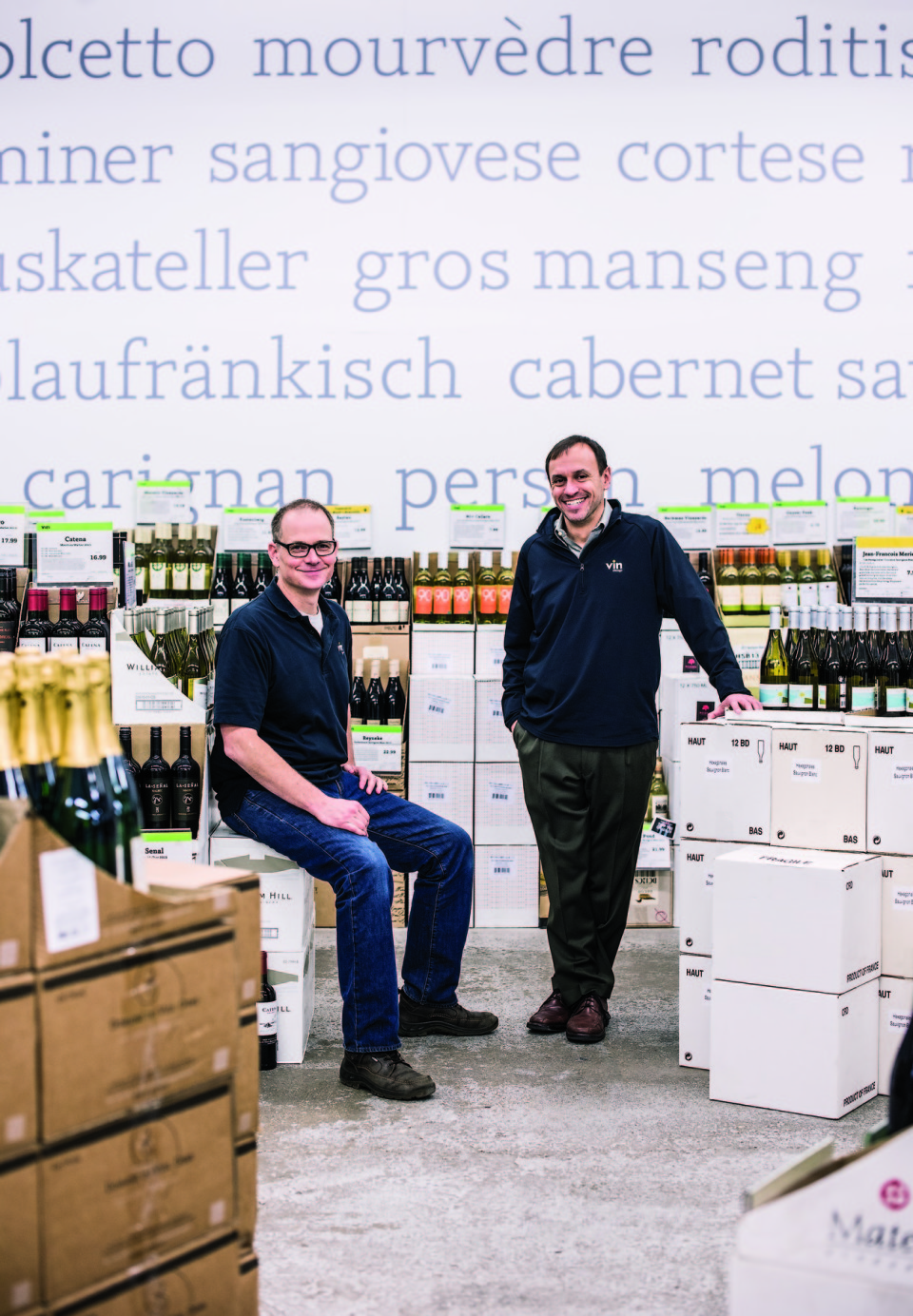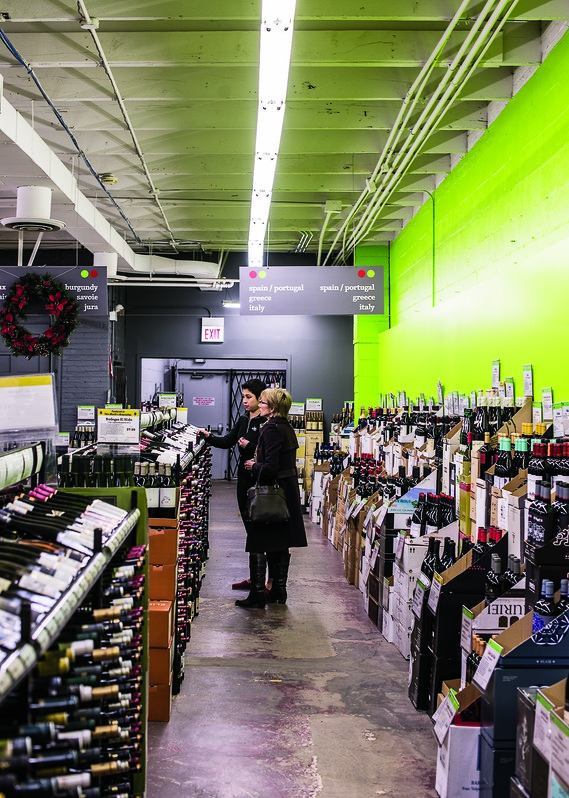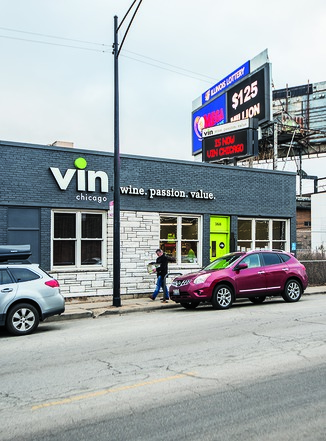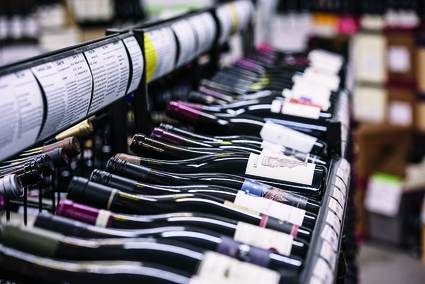
The record for retail succession around Chicago hasn’t been very good in recent years, but Howard “Bud” Schwarzbach is continuing his legacy. He launched the first Wine Discount Center store in 1986 on Chicago’s Near North Side, grew the business to five locations and became a Market Watch Leader in 1999. As he approached retirement age, the retailer had no obvious heir to the company. His son, Peter Schwarzbach, who received a master’s degree in business from Northwestern University in Evanston, Illinois, had taken a job in Kentucky as a steel buyer for Toyota Motor Co. and seemed unlikely to ever trade working at one of the world’s largest corporations for stacking cases of Chardonnay.
Yet family businesses can take unpredictable turns. Finding himself unemployed in 2001, Peter Schwarzbach moved back home and took a few wine-tasting classes to fill his time. Then his father asked him to consult at Wine Discount Center. One thing led to another, and in 2007, he became the company’s sole owner. His 80-year-old father still carries the title of president and comes to work almost every day, tasting wines presented by wholesalers and attending to customers. “He has always had a really good palate for tasting,” Peter Schwarzbach says. “I’m only average in that regard.”
Renamed Vin Chicago two years ago, the company has developed into a harmonious family enterprise. Bud Schwarzbach’s daughter Ellen Schwarzbach processes online orders four days a week, and his daughter Laura Schwarzbach, who used to be a store manager, spends 10 hours a week buying accessories and training staff. “We almost never have any big disagreements,” he says. “We have differences of opinion, but we can always work things out.”

New Focus
Under Peter Schwarzbach, Vin Chicago is very different from its discount origins. In addition to the name change, the headquarters moved from the western suburb of Addison, Illinois, to the northern suburb of Highland Park. Peter closed some stores that were selling both wine and beer and tightened the focus to wine at the four remaining stores—one each in Chicago, Highland Park, Naperville and Barrington. He’s also upsized these stores from around 2,800 square feet to an average of 6,000 square feet, with the idea that modern shoppers demand a larger selection. The new strategy is working: Sales rose 7 percent in 2014 to surpass $20 million.
The revamp, trumpeted in local newspaper advertisements, caught Chicago shoppers by surprise. Wine Discount Center had borrowed its original formula from two stores that served as role models in the 1980s: Los Angeles Wine Co. and San Diego Wine Co. Both outlets were founded by Tom Kowalski, who worked as a wine buyer in the 1970s for Bud Schwarzbach’s previous company, the eight-store Famous Liquors. Kowalski pioneered the bare-bones warehouse format, with pallets of wine piled high on plain cement floors, and ran gross margins as thin as 10 percent.
Eventually, the Wine Discount Center moniker became too limiting. “The discount name is outdated,” Bud Schwarzbach says. “Everybody is a discounter now, so that word has lost its power to pull people into stores.”
There was another negative aspect to the old name. Over the years, Wine Discount Center carried wines priced from $6 to $600, including first-growth Bordeaux, at low profit margins. But serious collectors steered clear of the stores on the assumption they didn’t carry high-end wines. “Some of the wineries I represent didn’t want their premium wines associated with a discount house,” says Scott Cohen, vice president and sales manager at importer Heritage Wine Cellars Ltd. in Niles, Illinois. “It was time for a change.”
A consulting firm hired by the family to boost the company’s image suggested Vin Chicago, which was tested with more than 1,000 customers. Since the Vin.com URL wasn’t available and Vinchicago.com was, the moniker stuck. “We thought the name would look good on a website,” Peter Schwarzbach says, noting that the word’s French pronunciation is invariably Americanized. “That’s OK—the correct pronunciation isn’t a big deal here.”

Bigger Inventories
The stores still have a warehouse-style layout, though they’ve been upscaled in the past 10 years with the addition of wire shelving. The larger footprints allow the units to stock some 4,500 wine labels, triple the total from the late ’90s. Margins aren’t quite as thin as they were back then: Wine now garners close to 20-percent gross profit, which is still 10 points lower than can be claimed by most rivals, aside from big-box chains like Costco and Sam’s Club.
Even if margins are up, Vin Chicago still prides itself on low prices. “We don’t like to get beat on price by anybody,” Peter Schwarzbach says, explaining that he’s in a constant struggle to cut overhead. “Health insurance is more expensive for our workers, and credit card fees have become painful.” He’s quick to jump on end-of-quarter or end-of-year wholesale deals, even if it means sitting on inventory. Vin Chicago got about four turns on its inventory last year. “Ideally, we’d like to get one more turn a year,” he says.
Customer service is essential to the business. Vin Chicago has 25 full-time employees and another 80 or 90 part-timers. Store managers are knowledgeable and extremely loyal—one has been around for 37 years, while another has logged 10 years. Once a week, the managers gather for tastings—typically sampling 100 wines from 10 distributors—and choose to sell only the wines they believe in at their stores. Each has a key role, such as buying wine for the entire chain or overseeing the social media.
“The Schwarzbachs allow me a lot of autonomy,” says Mike Baker, who joined the company in 2004 after serving as a sommelier at local restaurants and now manages the Elston store. “The family respects my opinions and I feel like I’m really contributing. You don’t get that same feeling at bigger retail companies.”
The formula doesn’t lend itself to offering a lot of mainstream wine brands, such as Yellow Tail. Baker says his shelves encompass wines from remote French regions, including Jura, Corsica and Savoie, which are commonly only represented at huge superstores. In fact, 25 percent of sales comes from French wines and 35 percent of sales comprises American wines. The company carries labels like the 2005 Château Valandraud ($270 a 750-ml. bottle), the 2009 Château Pichon Longueville Comtesse de Lalande ($188) and the 2004 Louis Roederer Cristal Brut ($180). The Domaine Tempier Bandol rosé is chronically in short supply at rival shops, but Vin Chicago had cases of the 2013 vintage recently for $37 a bottle.
“Vin Chicago’s stores have very well-selected products,” says George Molitor, owner of importer Fine Vines in Melrose Park, Illinois. “The Schwarzbachs buy only what they like, and then they offer customers some really good deals. Both Bud and Peter have proven to be very good businessmen, as have their store managers.”

Maintaining Tradition
Bud Schwarzbach grew up in Chicago’s Austin neighborhood, earning a business degree from the University of Illinois in 1956 before serving in the Navy for two years. He aimed to land a job with a big corporation until his father, Harry, reeled him in to work at the family’s original West Town Liquor Supply Co. store, which opened in 1934. His future was cemented in the early 1960s when he began traveling to France, Italy and Germany to taste wines with a select group of retailers and fell in love with the business. Before long, West Town expanded in size, a second store launched and a group of eight stores joined under the Famous Liquors name, with Bud Schwarzbach serving as president. Determined to open his own discount retail concept, he launched the first Wine Discount Center in 1986 in an area of Chicago that hadn’t yet been gentrified. He left Famous Liquors not long afterward.
With such deep retail roots, it’s no surprise that Vin Chicago still puts out a monthly newsletter that’s printed on eight pages on slick stock and features photos of every bottle shot in-house, along with extensive tasting notes and scores taken not just from staff, but from a wide range of media outlets, including Market Watch sister publication Wine Spectator. The selection is eclectic, promoting the 2012 Emile Beyer Tradition Riesling from Alsace for $15 a 750-ml. bottle, the 2012 Robert Oatley Margaret River Cabernet Sauvignon from Australia for $16 and the 2009 Casanova di Neri White Label Brunello di Montalcino from Italy for $48. “We’ve had a newsletter for 20 years, and our customers continue to find value in it,” Peter Schwarzbach says. “They still come into our stores carrying the newsletters with certain wines highlighted.”
The newsletters last all month and often even longer because Vin Chicago rarely changes its prices. In fact, the store stages no conventional sales, with the only exception being end-of-bin closeouts, and Peter Schwarzbach still has faith in everyday low pricing. “We don’t want to raise prices just to lower them later,” he explains. “That approach requires constant changes in signage among other things. The wine business is complicated enough as it is. We like to keep the pricing as simple as possible.”

Strong Online Sales
For a company steeped in such a rich history, its Internet business is surprisingly robust. About one-fourth of all sales currently occur online, though the audience is limited to Illinois residents only and almost all of them pick up their merchandise in person at the stores. Email blasts go out twice a week to more than 40,000 people. Upon making a purchase, customers immediately receive an email detailing each item, along with complete tasting notes and even recommendations for how long to cellar wines. It’s a delightful touch for a shopper apt to forget that Wine Spectator awarded a particular Chardonnay a score of 92. The idea came from a customer who happened to work for Google.
Bud Schwarzbach credits his son for such advances. “When Peter joined the company, we had only a basic website and my technology skills were falling behind,” he recalls. “I didn’t have the know-how to run a modern retailing operation. Peter had all the information technology skills that I lacked. So he came aboard at just the right time to make sure we modernized.”
Zach Patap, director of sales and marketing at importer Maverick Wine Co. in Bensenville, Illinois, agrees that the changes have been well-integrated. “Peter played a key role in pushing his father and the company into the Internet, better internal systems and new branding,” he adds.
One big change would be expansion. But both father and son remain cautious on that subject. “We always have our eyes open, but we’re not actively looking,” Peter Schwarzbach says. His father believes that Vin Chicago may well be the perfect size for wine retailing. “We’re big enough to qualify for good pricing, but not so big that we lose touch with our staff and customers,” says Bud Schwarzbach, who has no intention of retiring or even slowing down. His health is good, and with three children all working at Vin Chicago, he’s never felt so optimistic about the future of the business.